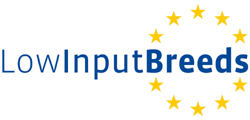Contact
Dr. Sophie Prache
INRA Clermont-Ferrant-Theix
IR1
63122 Saint-Genès-Champanelle
France
Tel. +33 4 73624063![]() E-mail
E-mail
www.clermont.inra.fr ![]()
LowInputBreeds: Update on work package 2.3 'Meat and carcass quality'
The following article reports in detail the progress in work package 2.3. ‘Meat and carcass quality’. An overall progress report for subproject 2, 'Sheep'. is available in the ![]() LowInputBreeds Newsletter of April 2010 (403 KB).
LowInputBreeds Newsletter of April 2010 (403 KB).
Researchers from the Research Institute of Organic Agriculture FiBL, the University of Catania (Ucat) and the French National Institute of Agricultural Research INRA involved in work package 2.3. ‘(Sheep) meat and carcass quality’ met for two days in March 2010 to exchange information about the current and planned experiments, to discuss the experimental designs, to standardise methodologies and finalize their collaboration. The meeting took place at FiBL in Frick and offered an opportunity to visit their experimental facilities.
All participants agreed the meeting was useful and fruitful. Some details need further discussions which can be managed by phone or e-mail.
Update on the work packages:
- INRA’s 3-year experiment to study the ‘Effect of management practices (mineral nitrogen fertilisation level x pasture availability x supplementation with sainfoin) on level of parasitism and lamb meat quality’ took place between March and November 2009. During this first experiment, it became apparent it was difficult to combine both meat quality and parasitism objectives. It was therefore proposed to modify the experimental design by conducting two separate experiments; one mostly dedicated to meat quality and the other to parasitism control objectives. This will enable greater flexibility in the management of experiments and avoid the risk of bias. The majority of the measurements planned were still maintained in both experiments.
- The experiment planned at UCat ‘Effect of the time of grazing within the day (morning vs afternoon) on lamb meat quality’ started in March 2010. Compared to the initial plan, it was proposed to expand the design by adding two experimental control groups, one continually grazing and the other being continually stall-fed, this latter likely to result in the lowest concentration of skatole in carcase fat.
- The experiment planned at FiBL ‘Quantification of the effect of integrating tannin-rich forages (one or two vs no supplementation periods) with the use of parasite tolerant breeds (Engadine vs White Alpine breed) and strategic use of clean pastures (upland vs lowland pastures)’ is planned to begin in May 2010 with weaned lambs. UCat will be involved in meat quality analyses on 48 lambs from the 4 lowland groups (12 randomly chosen lambs per group) assessing the effect of sainfoin on meat peroxidation levels. Lamb selection for meat quality assessments, the timing sainfoin supplementation and the necessary samplings, measurements and analyses have been discussed.
Contact
- Dr. Sophie Prache, INRA Clermont-Ferrant-Theix, 63122 Saint-Genès-Champanelle, France, Tel. +33 4 73624063,
 e-mail
e-mail
 This website was archived on December 19, 2017 and is no longer updated.
This website was archived on December 19, 2017 and is no longer updated.


